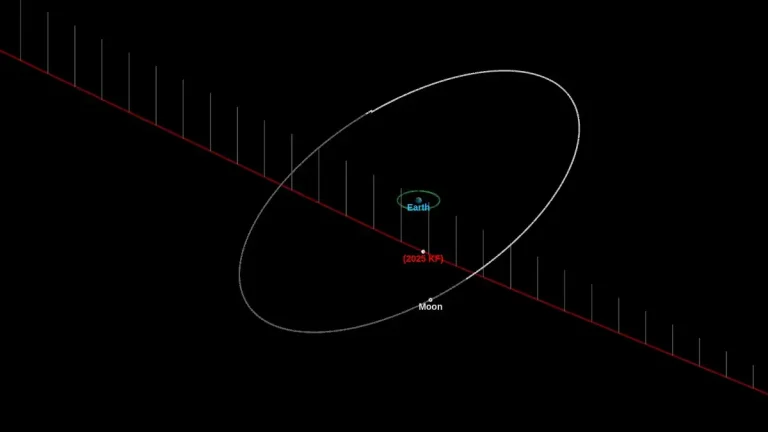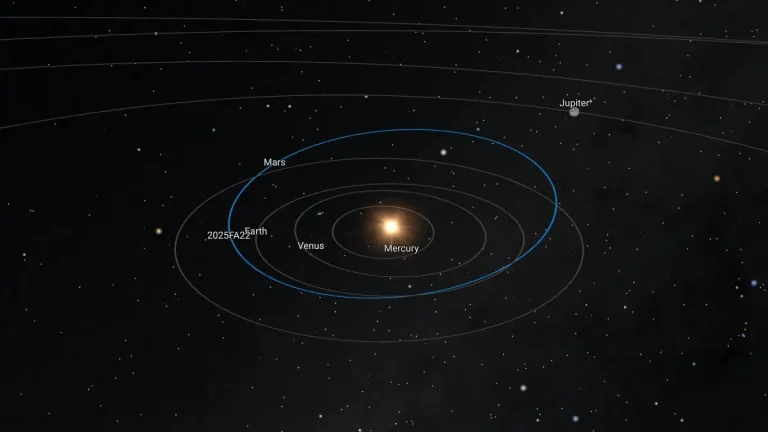Asteroid 2025 KF to fly past Earth at 0.3 LD on May 21
A newly discovered asteroid designated 2025 KF will fly by Earth at a distance of 0.3 LD / 0.00077 AU (114 000 km / 71 222 miles) from the center of our planet on May 21, 2025.

A newly discovered asteroid designated 2025 KF will fly by Earth at a distance of 0.3 LD / 0.00077 AU (114 000 km / 71 222 miles) from the center of our planet on May 21, 2025.

A newly discovered asteroid, 2025 FA22, has climbed into the top five positions of the European Space Agency’s (ESA) risk list due to its low but measurable chance of striking Earth in 2089. During the first four months of 2025, more than 1 000 new NEOs have been discovered, in line with the recent average of about 3 000 per year.

A newly discovered asteroid designated 2025 HH flew past Earth at a distance of just 0.07 LD / 0.000021 AU (27 847 km / 17 304 miles) from the center of our planet at 23:24 UTC on April 17, 2025.

A newly discovered asteroid designated 2025 FV12 flew past Earth at a distance of 0.26 LD / 0.00079 AU (118 518 km / 73 644 miles) from the center of our planet at 01:31 UTC on March 28, 2025. This was the first of two asteroid flyby’s within 1 lunar distance today.

A newly discovered asteroid designated 2025 FY6 flew past Earth at just 0.05 LD / 0.00015 AU (21 944 km / 13 636 miles) at 19:29 UTC on March 23, 2025.

Asteroid 2024 YR4’s impact risk has dropped to 0.0017%, placing it a level 0 on the Torino Impact Hazard Scale. There remains a 1.7% chance of the asteroid impacting the moon on December 22, 2032.

Asteroid 2024 YR4 is making headlines again after new calculations revealed that the asteroid now has an impact probability to Earth of just 0.16% in 2032.

The impact risk of asteroid 2024 YR4 in 2032 increased from 1.8% to 2.6% (1 in 38) with new trajectory simulations and refined calculations. While the increase remains within a low-risk range, continued monitoring and additional observations will be necessary to further refine impact predictions.

The impact risk of asteroid 2024 YR4 in 2032 increased from 1.2% to 1.8% on February 6, 2025, following new trajectory simulations and refined calculations. While the increase remains within a low-risk range, continued monitoring and additional observations will be necessary to further refine impact predictions.

A newly discovered asteroid designated 2024 YR4 has activated global planetary defense protocols after initial observations indicated a small but notable chance of impact in seven years. International monitoring networks have begun refining its trajectory, while space agencies evaluate potential response strategies, including possible deflection measures.